Here is the Volume 3 of Judo from When you watch something, visit us first! Mr. Toshihiko YAMADA, Director and General Manager of the Ryotokuji University Staff Judo Team told us about Judo’s basic Nage Waza (throwing techniques) which are often seen and Judo’s Ne Waza (ground techniques) which are often compared to a “wisdom ring” this time. This is the complete version of Part 6 & 7 on our YouTube channel.
In Judo Vol.2, we learned about the aim of Judo-ka.
Mr. Toshihiko YAMADA, Director and General Manager of the Ryotokuji University Staff Judo Team, told us again Judo’s basic Nage Gaza (throwing techniques) and Ne Waza (ground techniques).
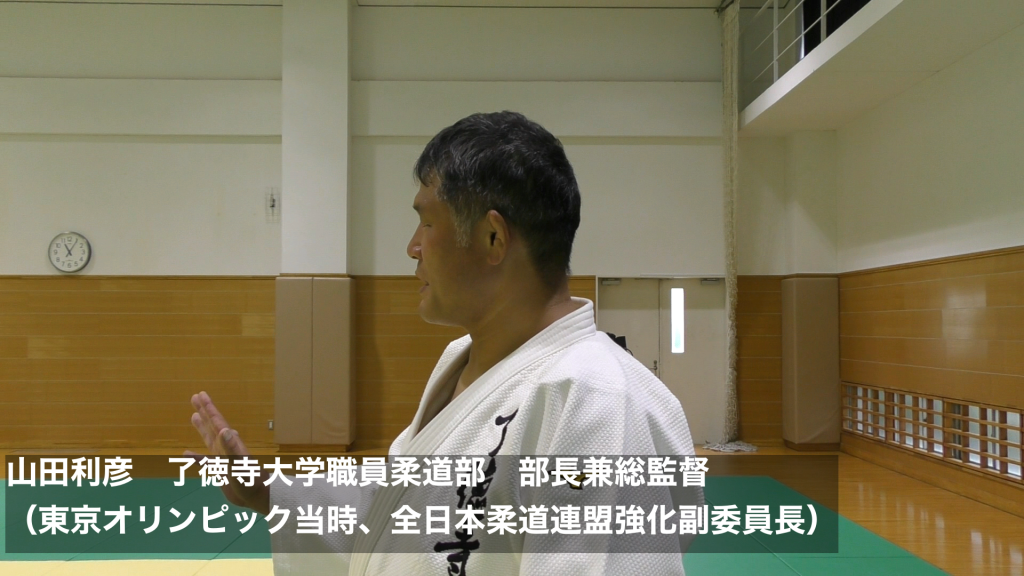
Part 6: Judo’s basic Nage-Waza (throwing techniques)

Nage Waza 1: Seoi-nage
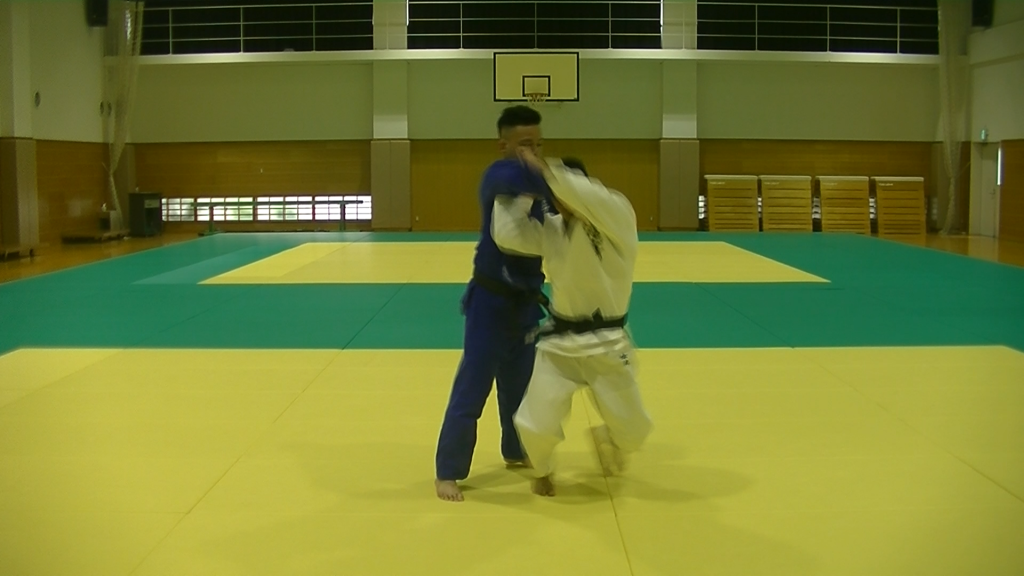
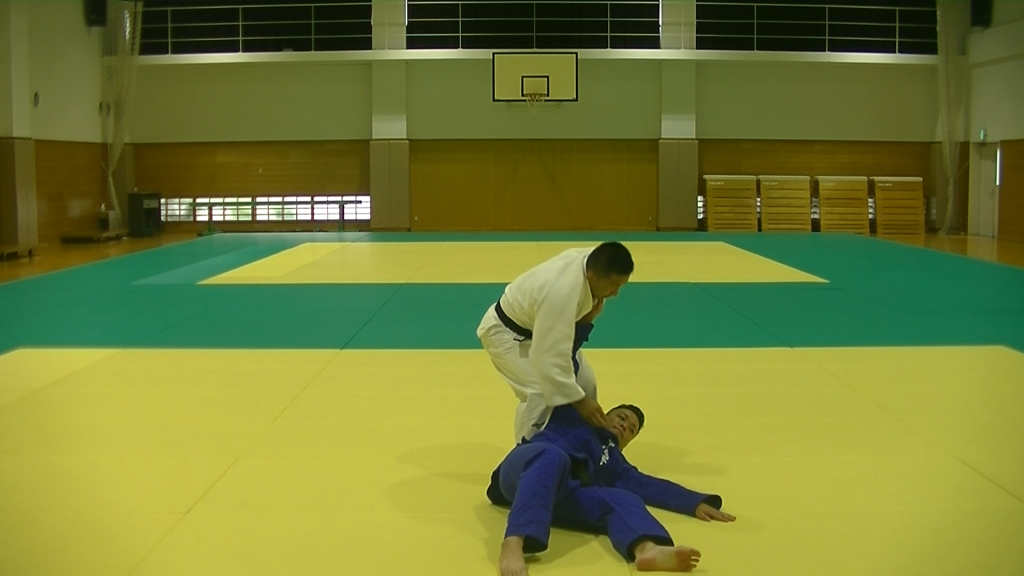
Nage-Waza 1. Seoi-nage (Combination of Waza)
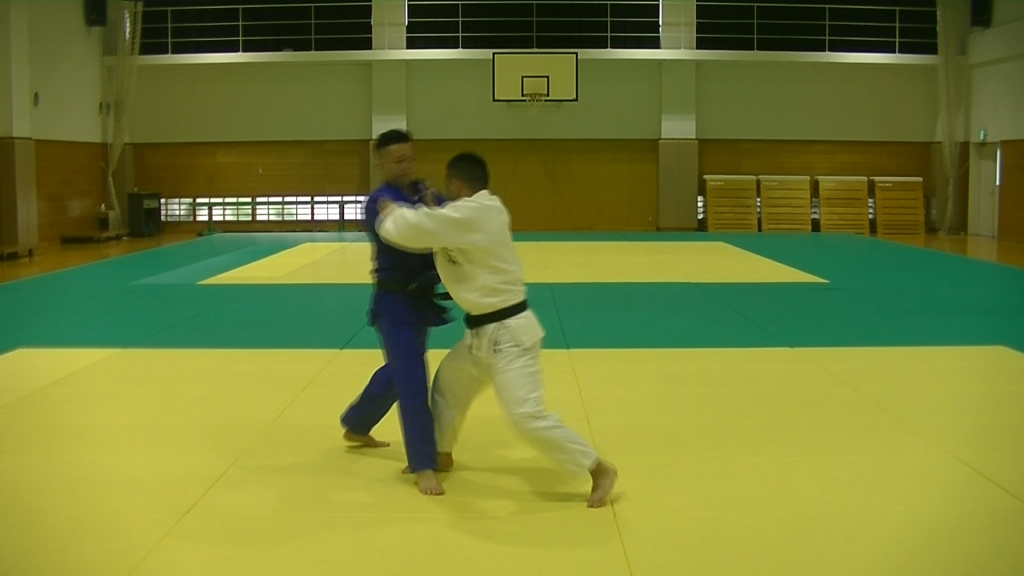
If the opponent senses that White is going to apply Seoi-nage, Blue will block it even if White go straight to apply into Waza (techniques), therefore, White applies a Kouchi-gari first to shift the opponent’s weight to his back,
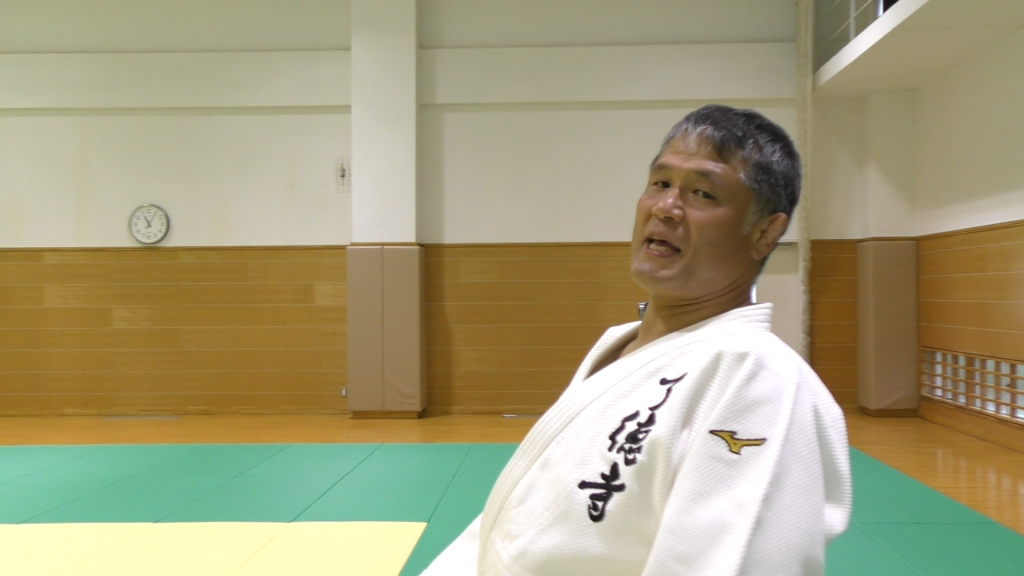
and then he uses the opponent’s reaction to come back and apply Seoi-nage.
Here is how they slowly apply Seoi-nage.
Where Blue goes back to front from behind, White applies Seoi-nage.

This kind of combination of contrasting Waza’s is effective, for example, Waza to knock the opponent’s forward and one of backward.
Nage Waza 2: Harai-goshi
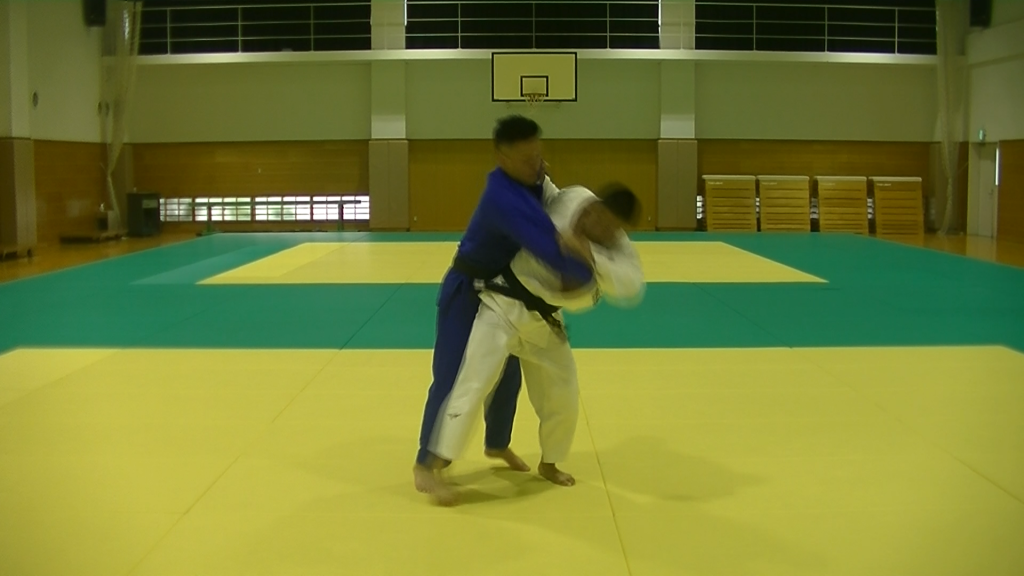
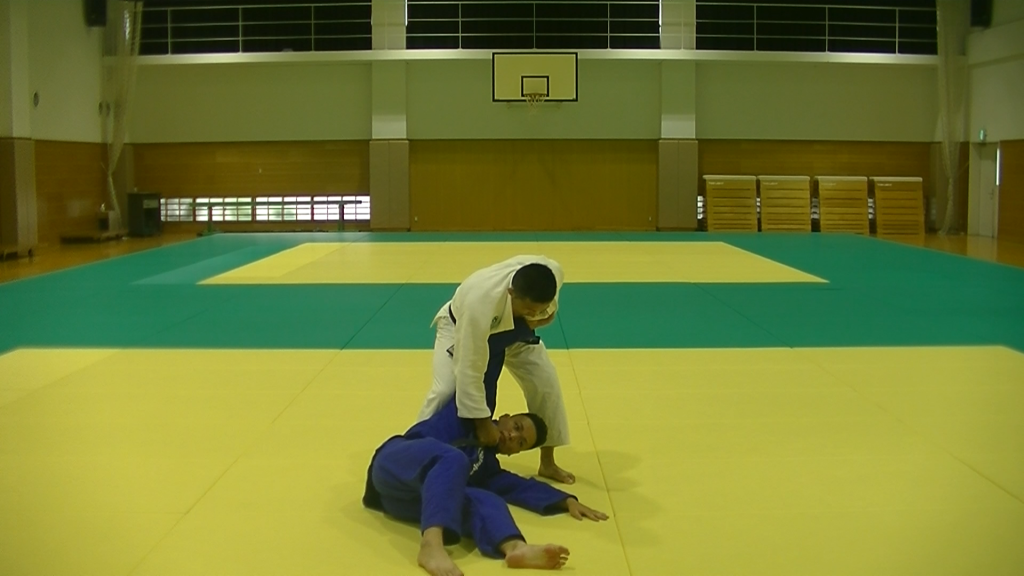
Nage Waza 2: Harai-goshi (Combination of Waza)
Next is a view of Harai-goshi utilizing a circular motion, not from a standstill position.
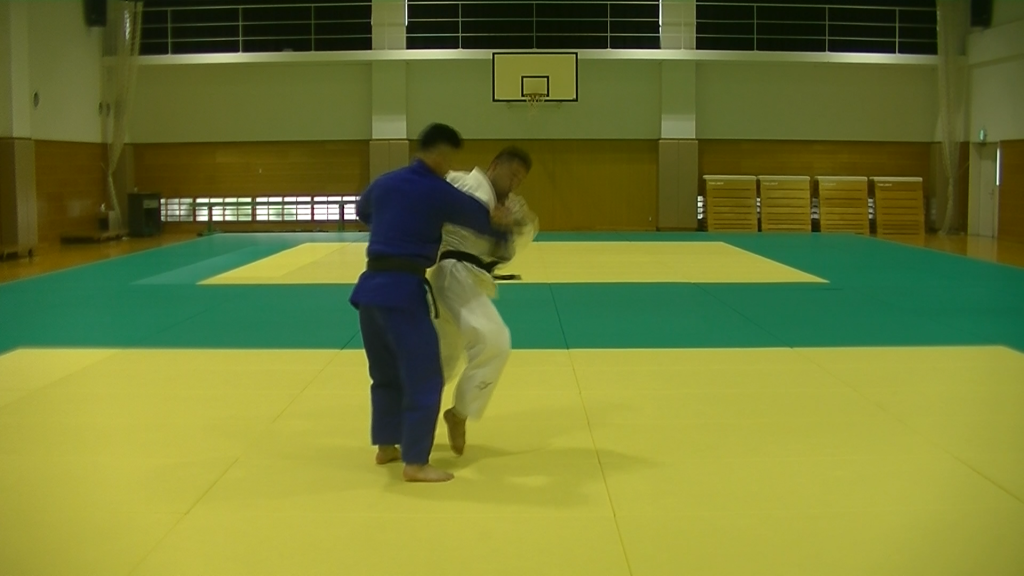
In this way, White utilizes his own bodywork to throw. White does not enter into Waza from a standstill position, but rather goes into Harai-goshi while moving where Blue does not know when he will come to apply Waza.
Nage Waza 3: Uchimata
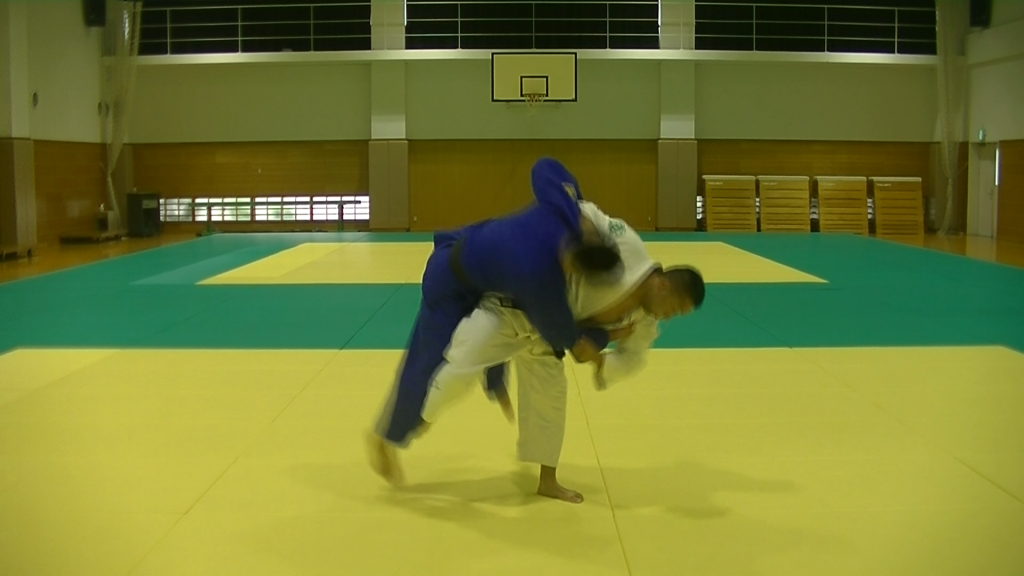
Nage Waza 3: Uchimata (Combination of Waza)
First, White goes into Ouchi-gari and push backward while bouncing,
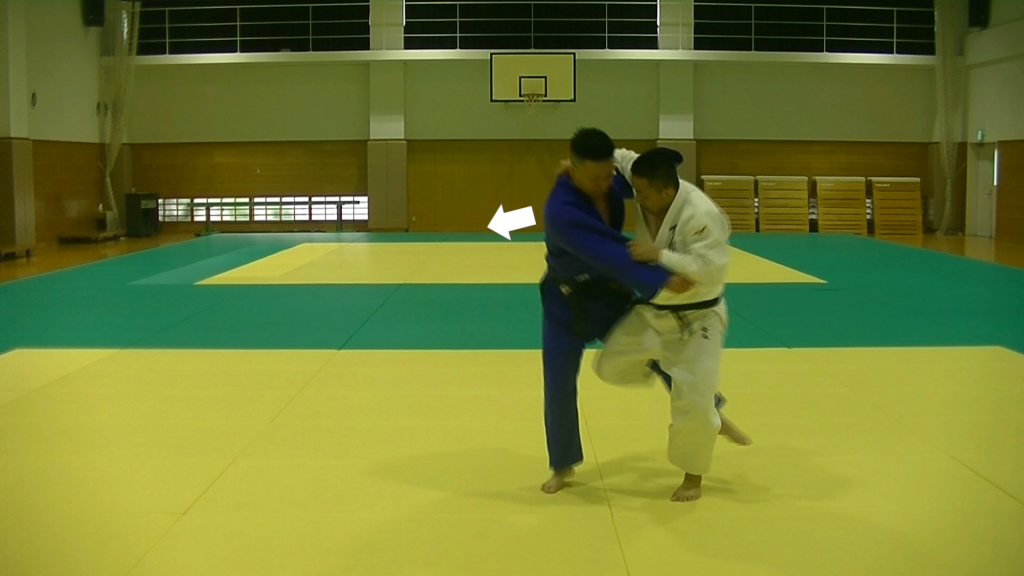
then he applies Uchimata.
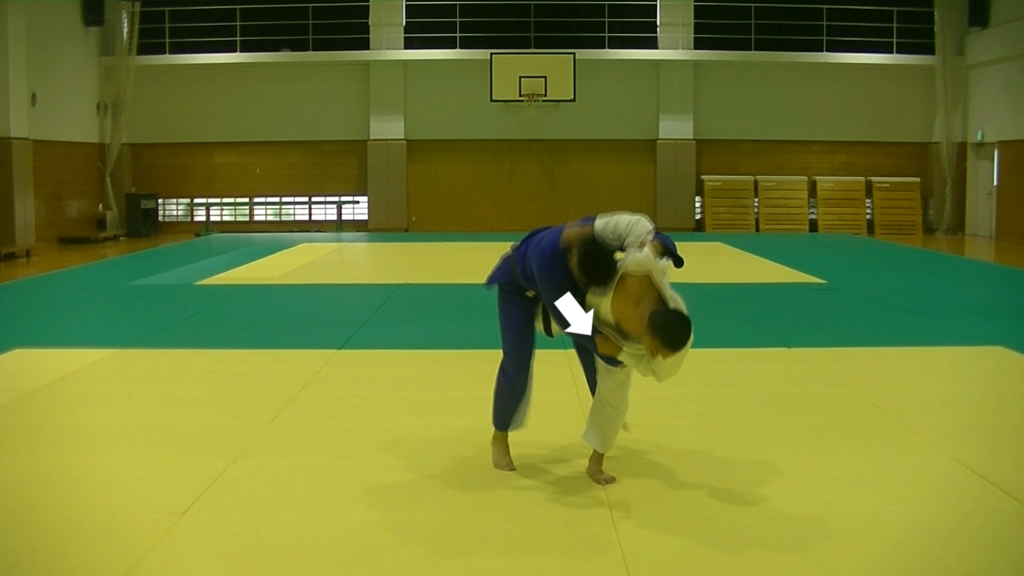
Nage Waza 3: Uchimata (Another combination of Waza)
White pushes Blue backward,
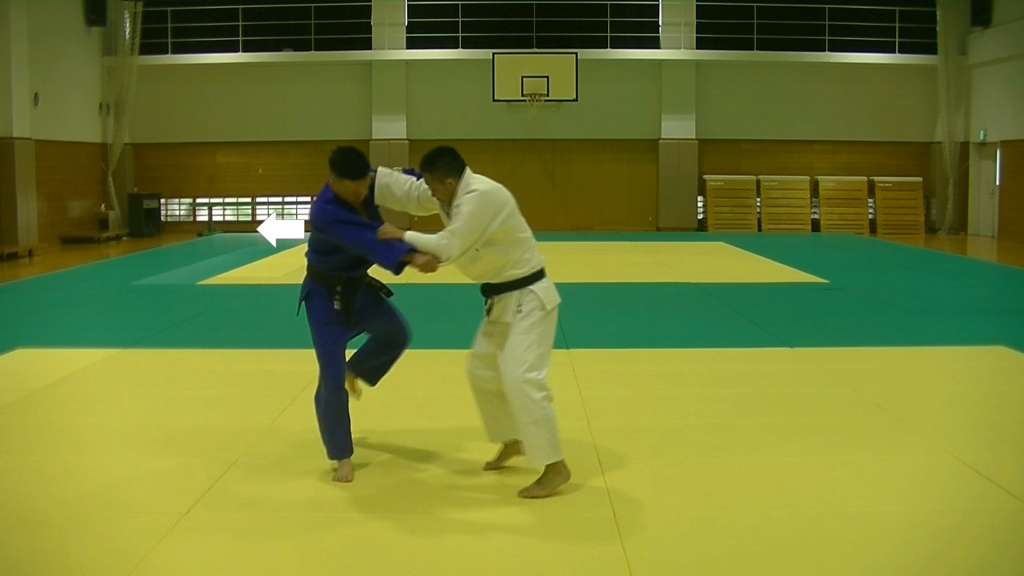
then Uchimata.
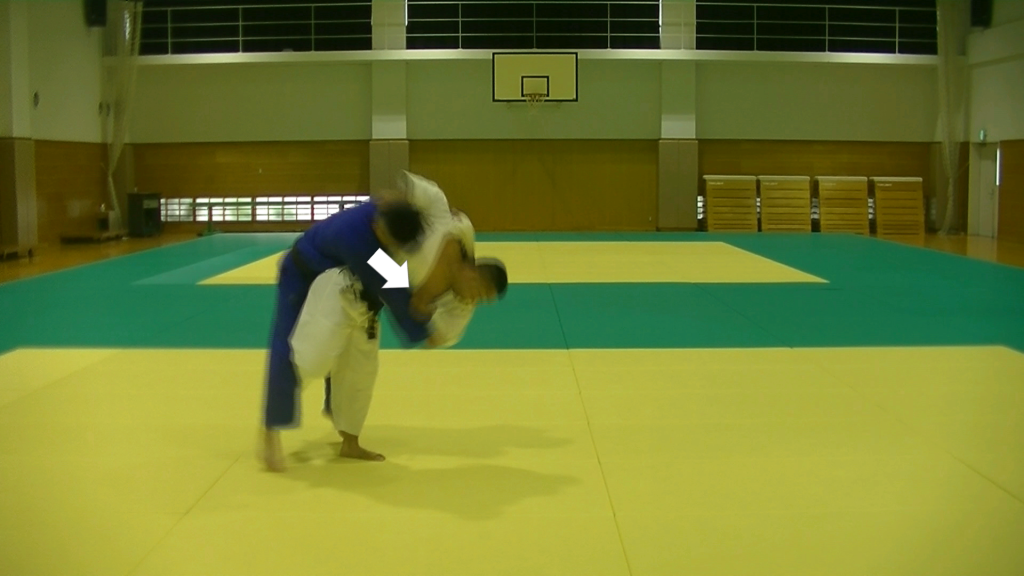
Combination from Uchimata to another Waza
This is a combination from Uchimata, when Blue realizes that he is about to be applied Uchimata and takes a defensive position by dropping his back,
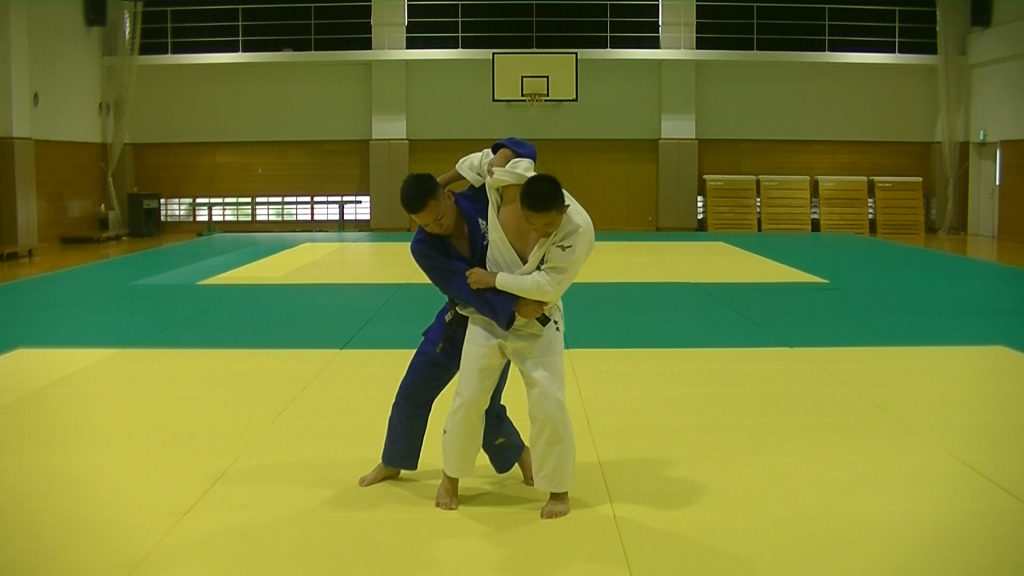
White applies Tani-otoshi, which knocks the opponent backward.
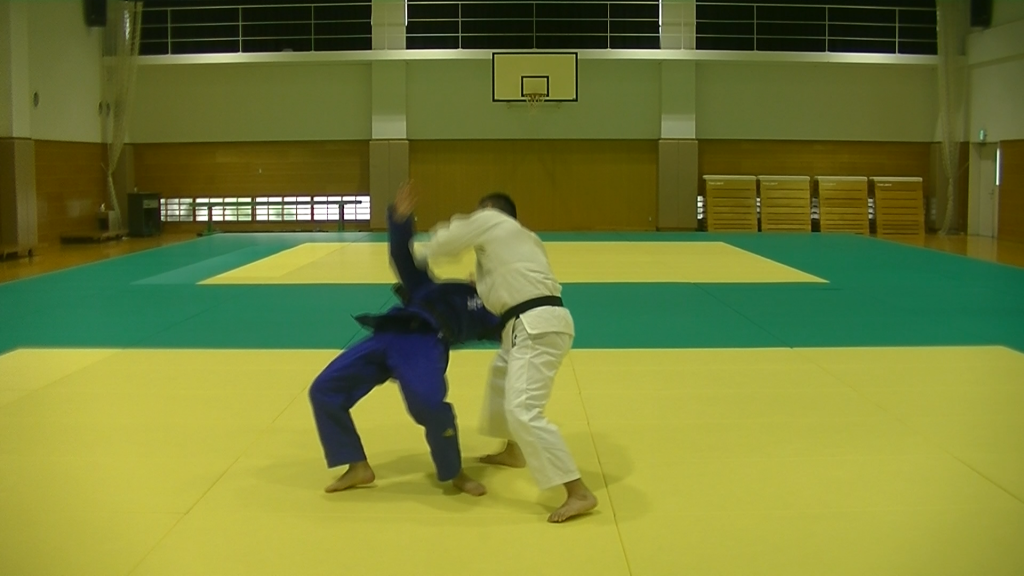
Nage Waza 4: Tai-otoshi
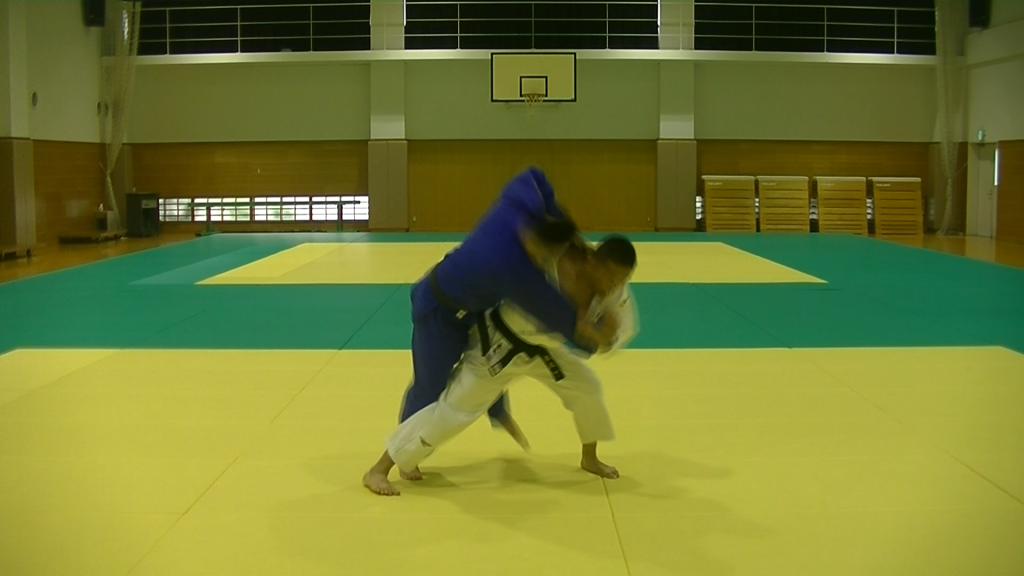
Nage Waza 4: Tai-otoshi (Combination of Waza)
To check Blue with his left leg and

where his body comes back from behind, White throws him forward.
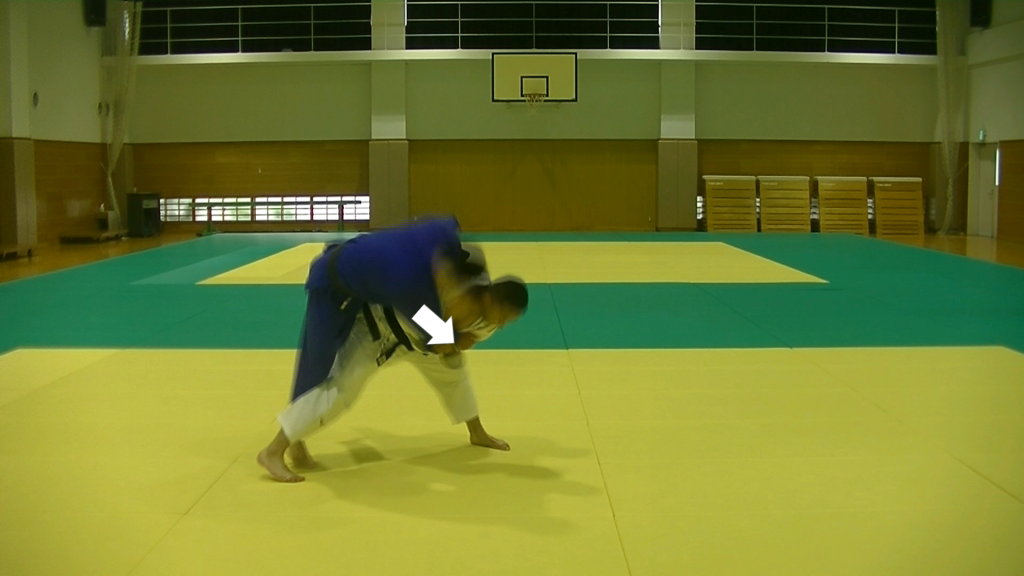
Nage Waza 5: Osoto-gari
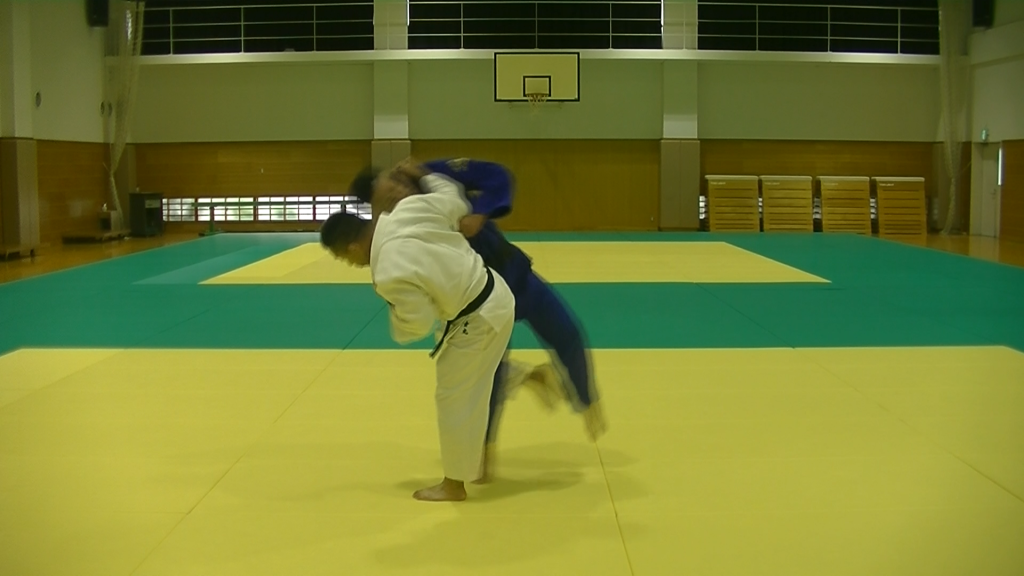
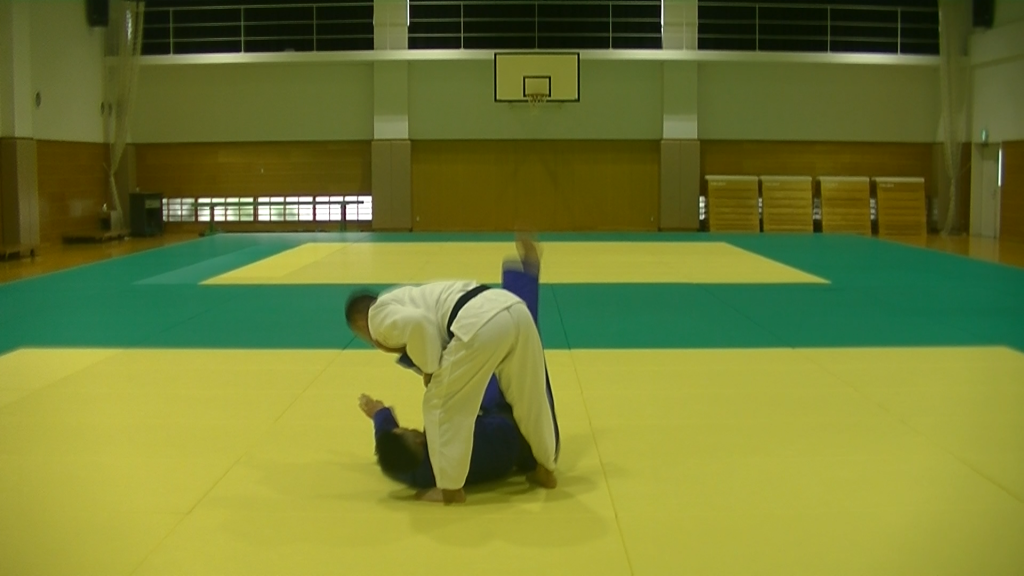
Nage Waza 5: Osoto-gari (Combination of Waza)
First, Sasae-tsurikomi-ashi is used to break the opponent’s stance forward,
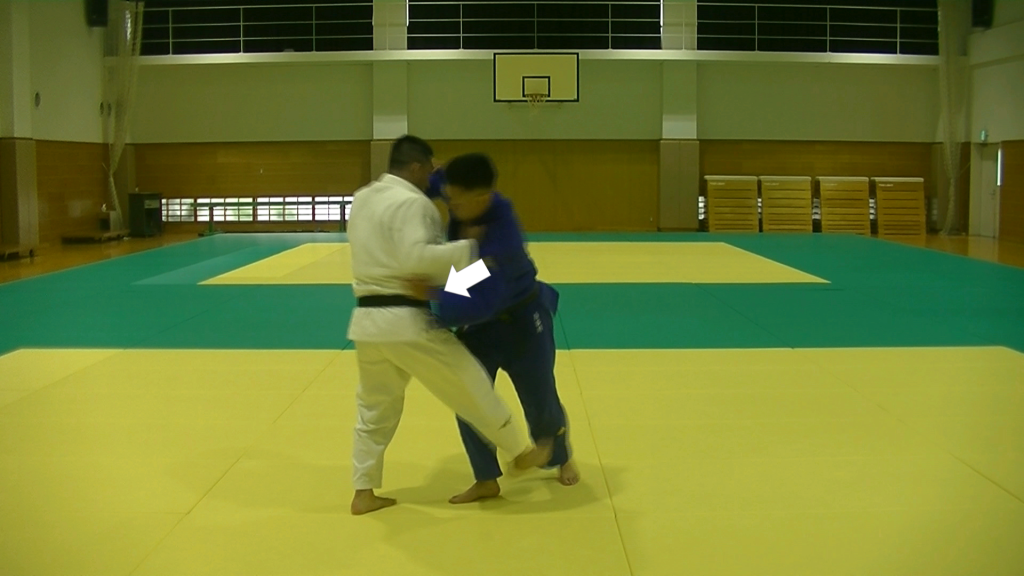
and White applies Osoto-gari where Blue is about to get up.
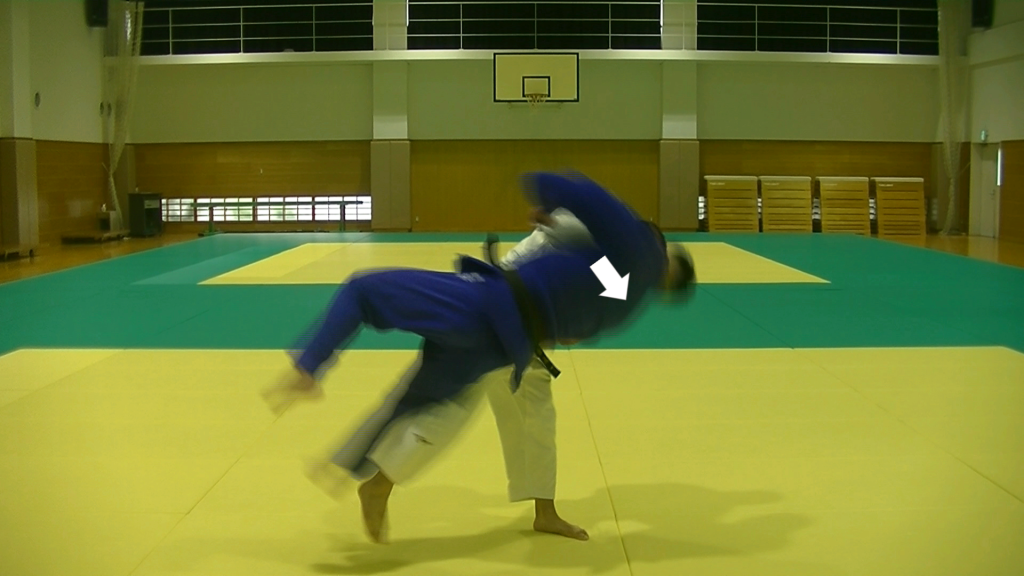
Combination from Osoto-gari to another Waza
When Blue knows that he is being applied Osoto-gari and prepare by pulling back his right leg,
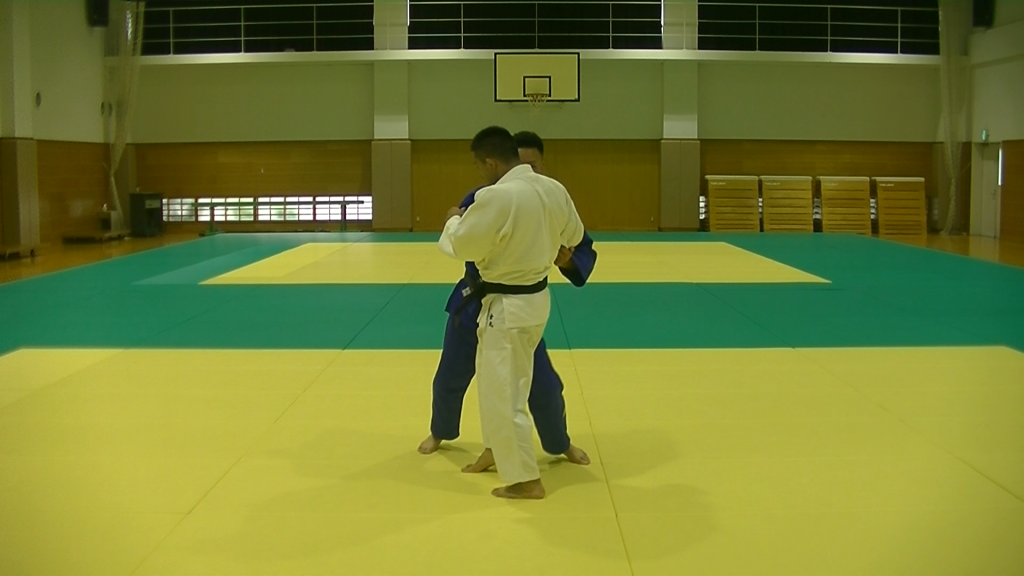
White applies Sasae-tsurikomi-ashi to knock his opponent forward.
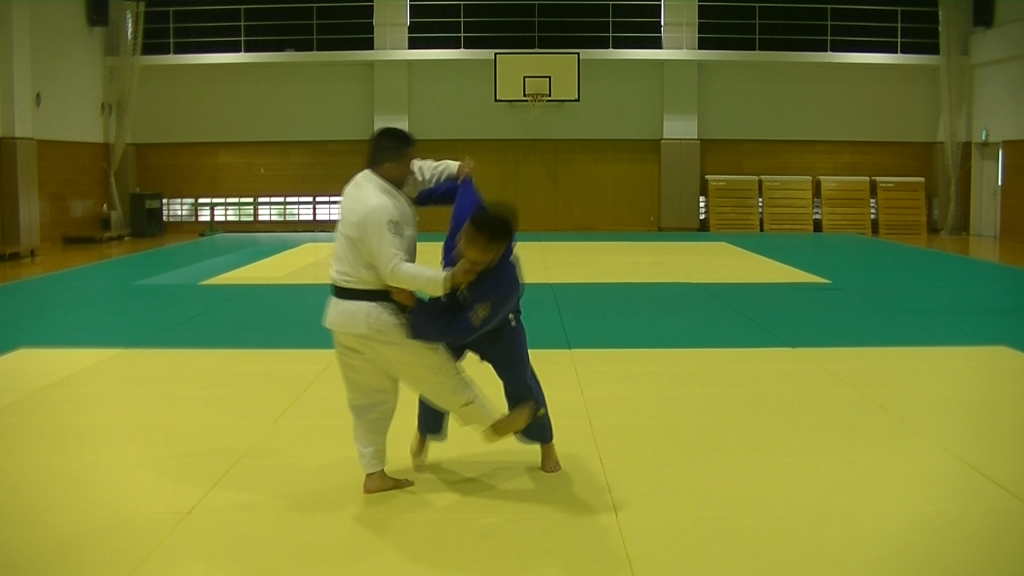
In this case, Blue is defending by pulling back his leg and moving his center of gravity backward,
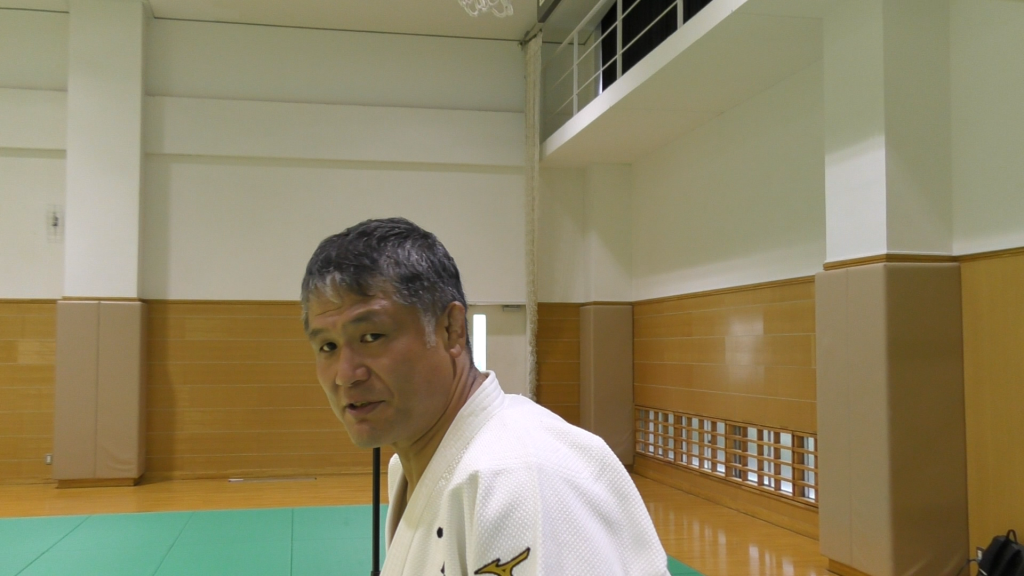
but if his body is leaning backward, he will be knocked down as it is,
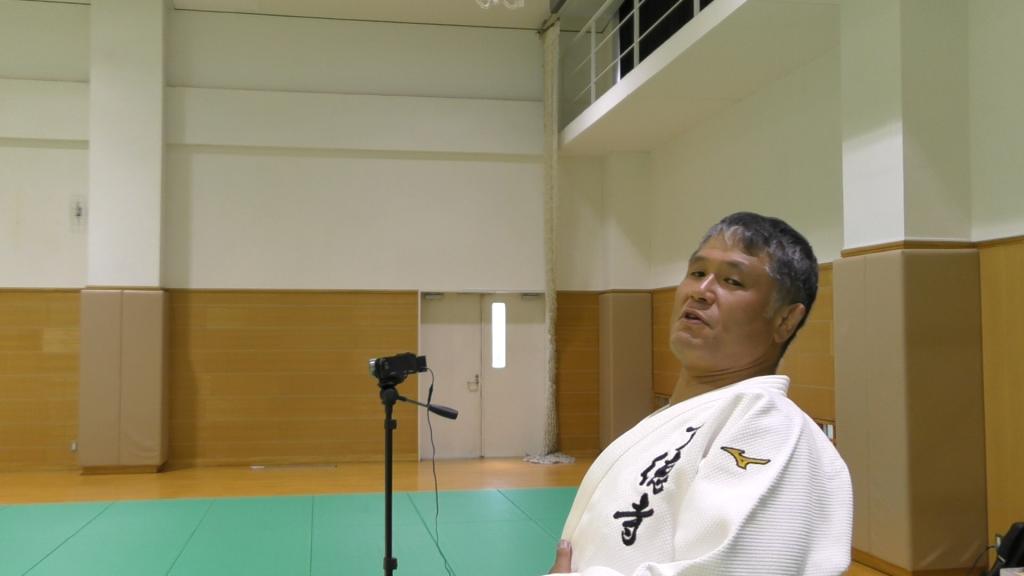
so Blue leans his body forward, but White takes advantage of this and throws forward. This is a very effective combination.
Nage Waza 6: Sumi-otoshi
Now, let’s see Sumi-otoshi, which is a common winning Waza recently. It is Waza like “Abise-taoshi” of Sumo in which the opponent’s body is pushed down, and, for example, Sumi-otoshi is applied with bodywork when the opponent comes to apply Osoto-gari.
For example, when Blue comes to Sasae-tsurikomi-ashi, White blocks it and pushes Blue down.
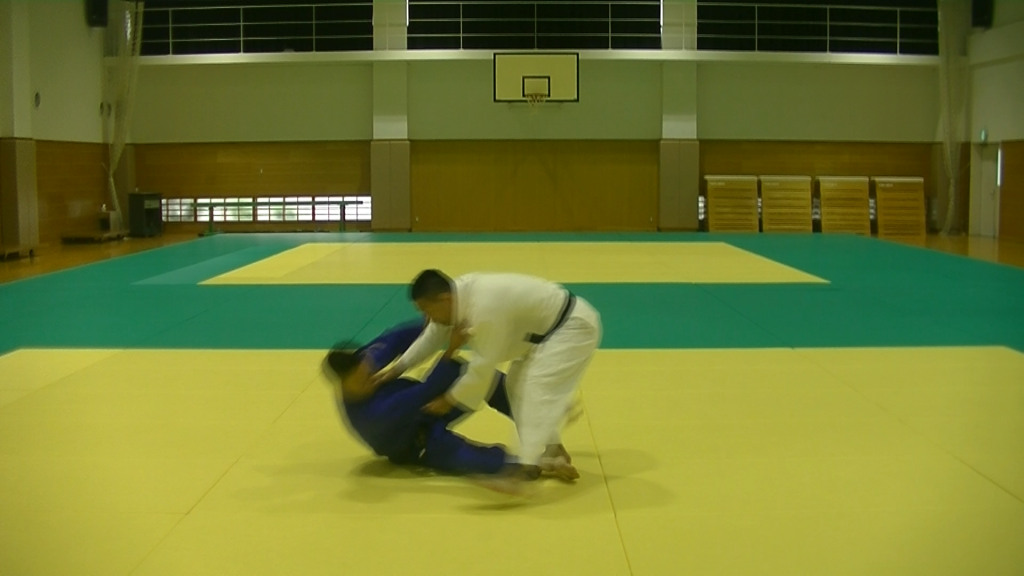
This is also considered Sumi-otoshi.
Nage Waza 6: Sumi-otoshi (another combination of Waza)
For example, when the opponent comes to Tai-otoshi, White pushes Blue down by Sumi-otoshi with his bodywork.
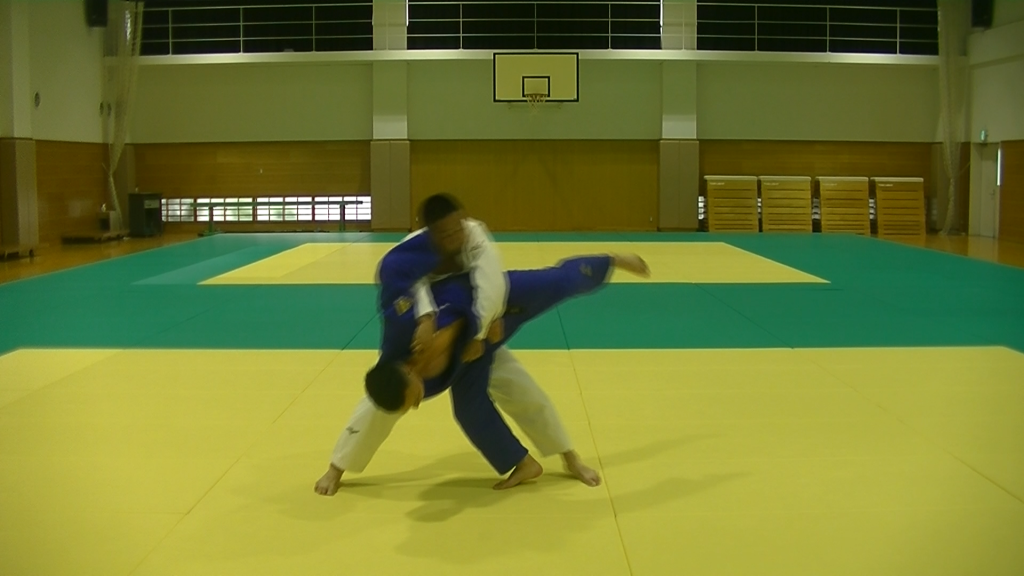
In Judo, since the name of Waza is determined by taking into account where is held by hands or the final position of the bodies, I think it is generally OK to assume that “pushing down” is considered as Sumi-otoshi.
Part 7: Is Ne Waza a “wisdom ring”?
In Ne Waza (ground techniques) , the most effective defense for Blue is to prevent the opponent from getting his hands into this area under the armpits.
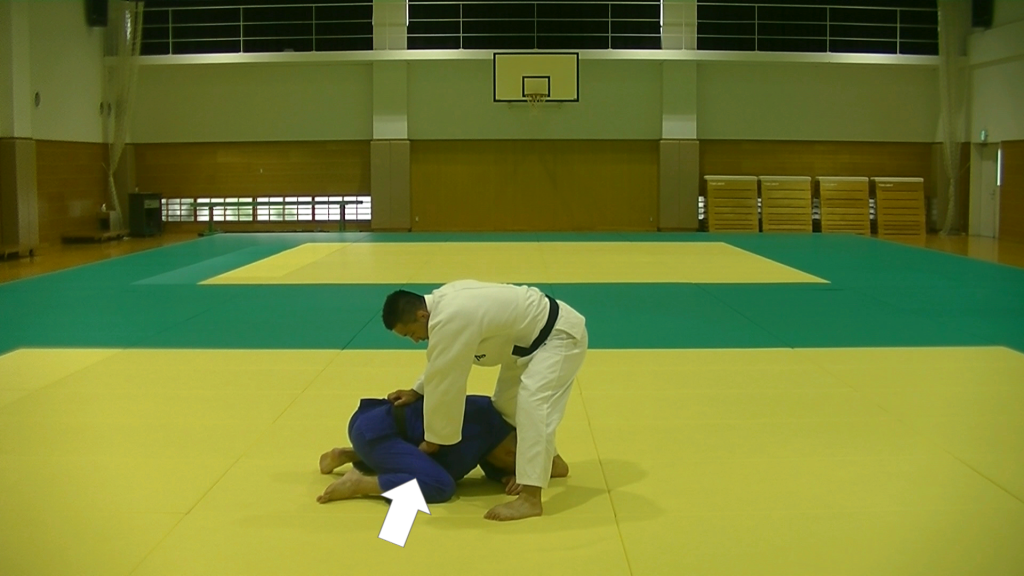
If the opponent takes a long time to put his hand into this area, Referee will call “Mate! (stop!)” in the recent matches. In contrast, now let’s suppose that White wants to grab Eri (collar) from behind of Blue, and turn the opponent around and flip him over. Here is how he returns the opponent by rolling with both of his opponent’s Eri.
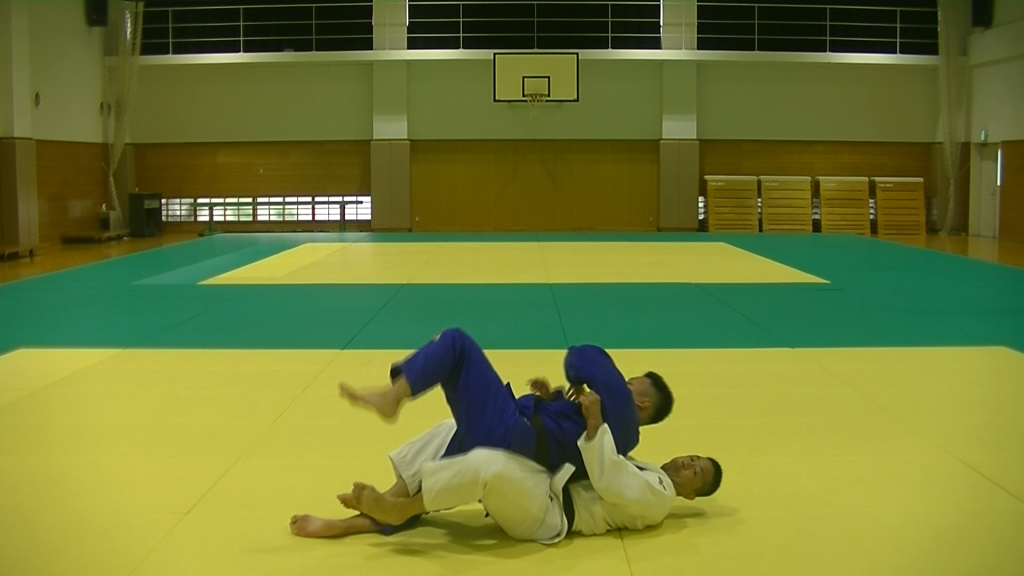
It is often called “Nelson”. Even in this case, if White can hold both of Blue’s Eri, he can turn Blue over, but Blue defends not to let him do so.
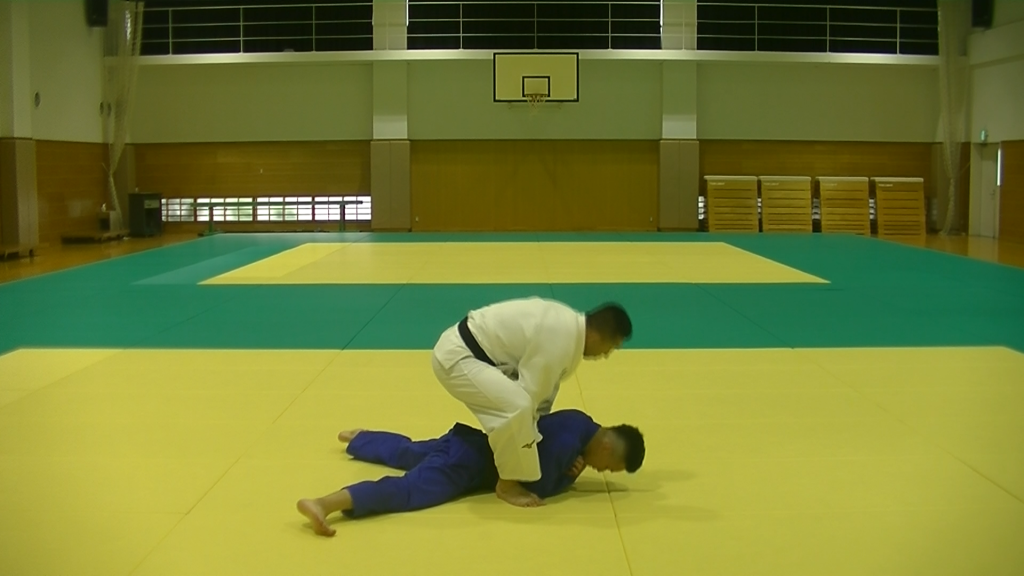
Q:It means that Blue is in a defensive position under his own body, though it’s hard to see now?
What Blue does under the body is to bring the arms close to the body in such a way
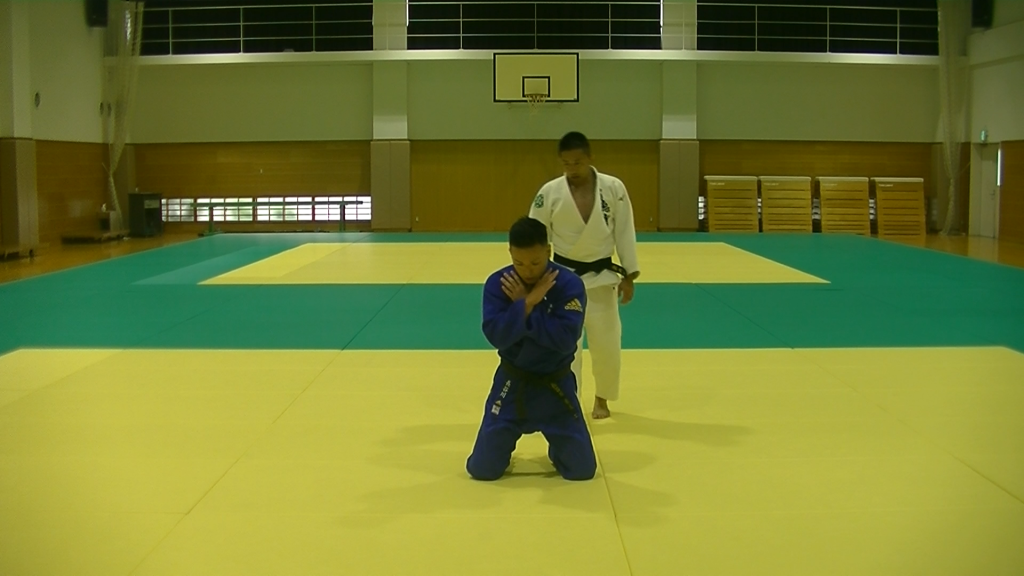
so that he can eliminate the space around him and the opponent cannot hold his body and Eri.
Q:Blocking the side of his body and around Eri?
Yes. However, in this position, the next target is his neck.
Q:The Blue hands are blocking his neck, doesn’t it?
Yes. Blue protects his neck with his hands and also protects the area around his neck from being controlled.

Once the defensive position is complete, it becomes very difficult, though not impossible, to pry it open. And if the opponent spends too much time there, Referee often calls Mate. During watching Judo, Judo-ka (athletes) who is well skilled in Ne Waza are very good at transitioning from Tachi Waza (standing techniques) to Ne Waza.
For example, if they are in Ai-yotsu (symmetrical stance) and White tries to transition to Ne Waza, he applies first Sasae-tsurikomi-ashi and when Blue falls down,
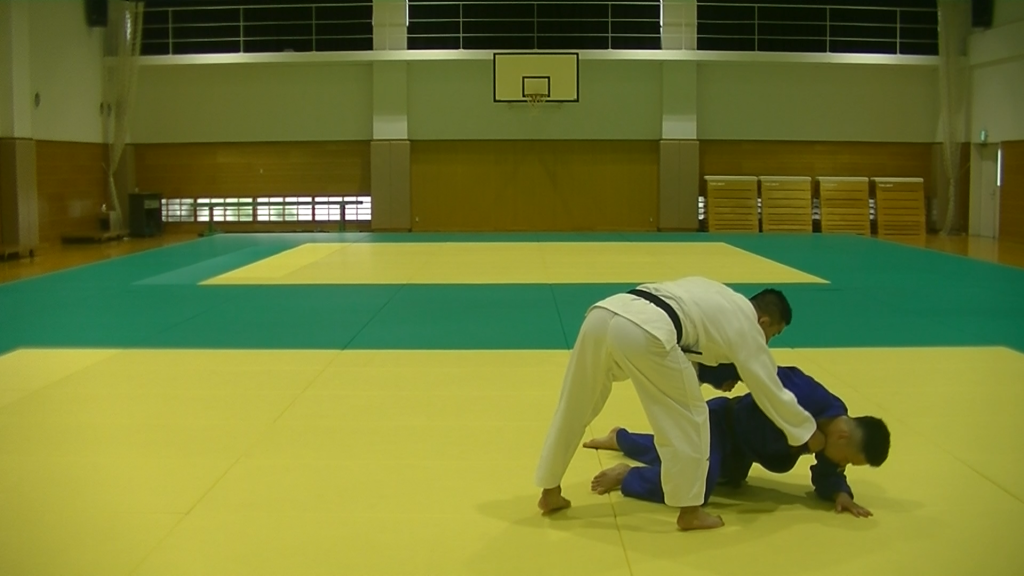
he can continue to hold Blue’s Eri and go straight into Shime Waza (strangling techniques).
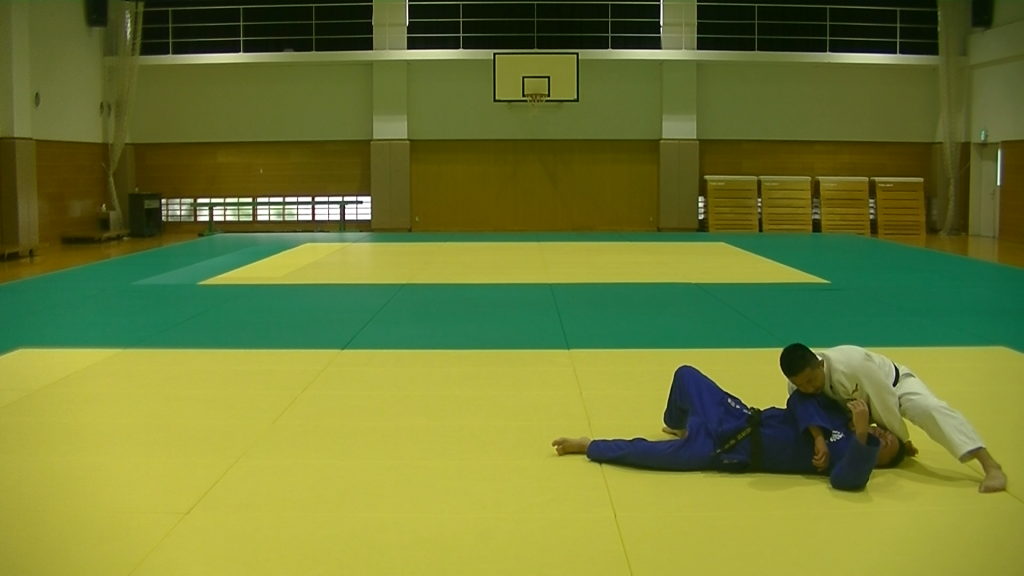
Otherwise, he can go into Osae-komi (hold-down techniques) while continuing to hold Eri. Furthermore, White can continue to hold Eri when Blue falls down and enter into Kataha-jime like this.
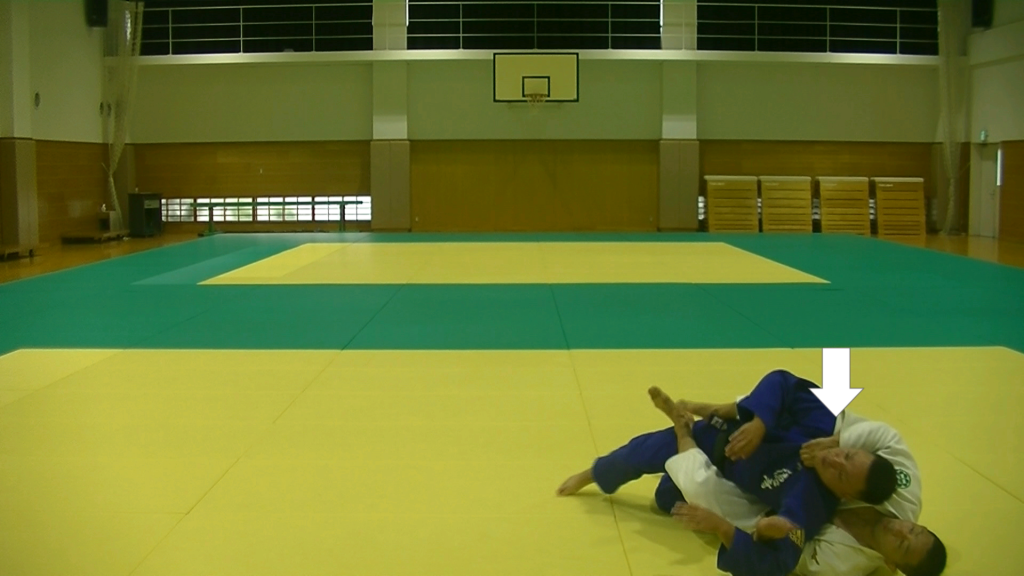
It is more effective if one’s best form of Tachi Waza (standing techniques) is connected to the form of the transition to Ne Waza when the opponent falls. That is not easy to do, but it is effective.
For example, in the case of Judo-ka who do Yoko-kuzashi, actually I did as well, they will continue to collapse sideways like this and can enter into Osae-komi.
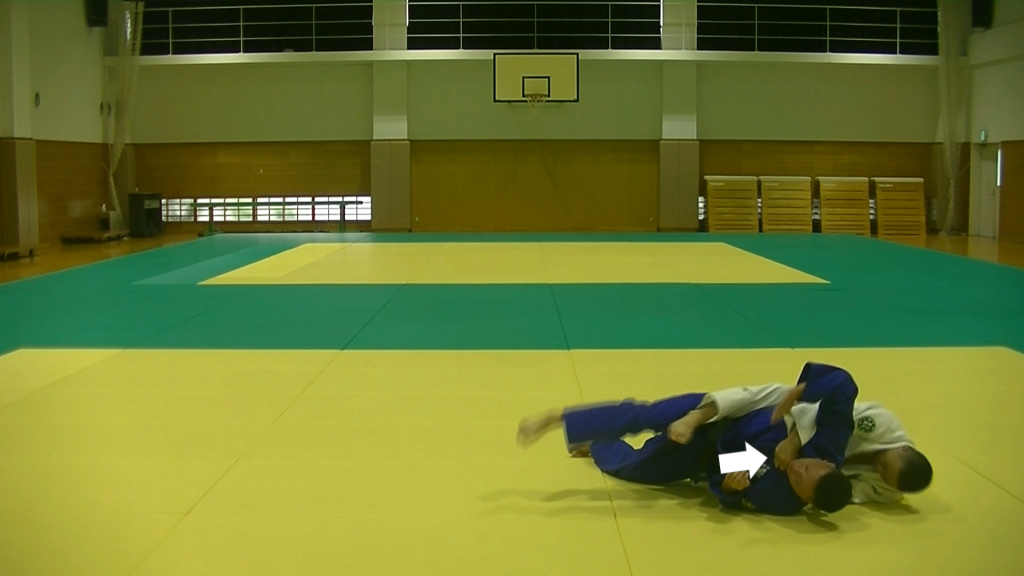
This is often seen in heavyweight classes. When this transition is connected, there is no need to go to the trouble of prying your hand in to grab such as Eri. For example, it is difficult to pry a hand into a grip if the opponent has taken in a firm defensive position as we saw earlier,
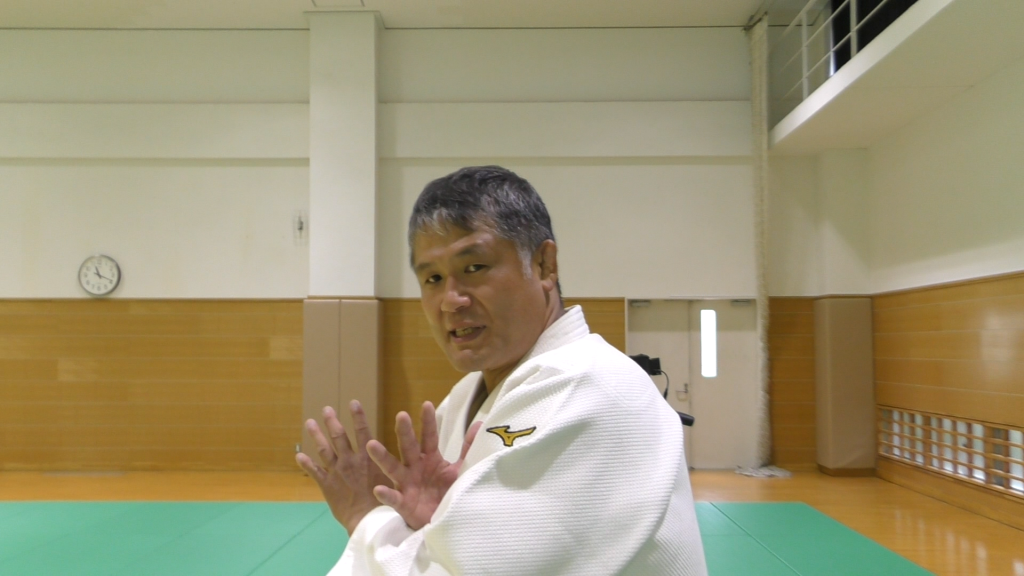
so it is important to grip before defense, therefore, the momentary attack and defense of such a connection from Tachi Waza to Ne Waza may be difficult to recognize if you are not familiar to watching Judo, but Judo-ka who are skilled in Ne waza and good at holding and strangling are very fast in this regard.
Q:Do Judo-ka who are skilled in Ne Waza sometimes intentionally continue to hold the opponent’s Eri?
Yes, of course there are such Judo-ka.
For example, in this case, White is holding Blue’s Eri with his right hand, so he can collapse sideways like this.
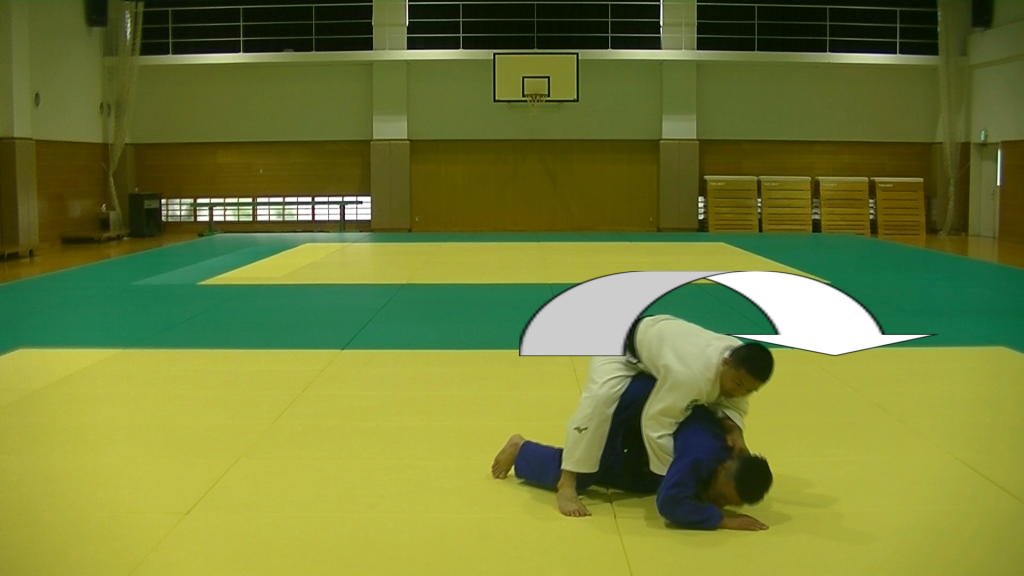
However, if White is good at to collapse sideway of reverse direction of rotation, the transition from Tachi Waza to Ne Waza is not connected.
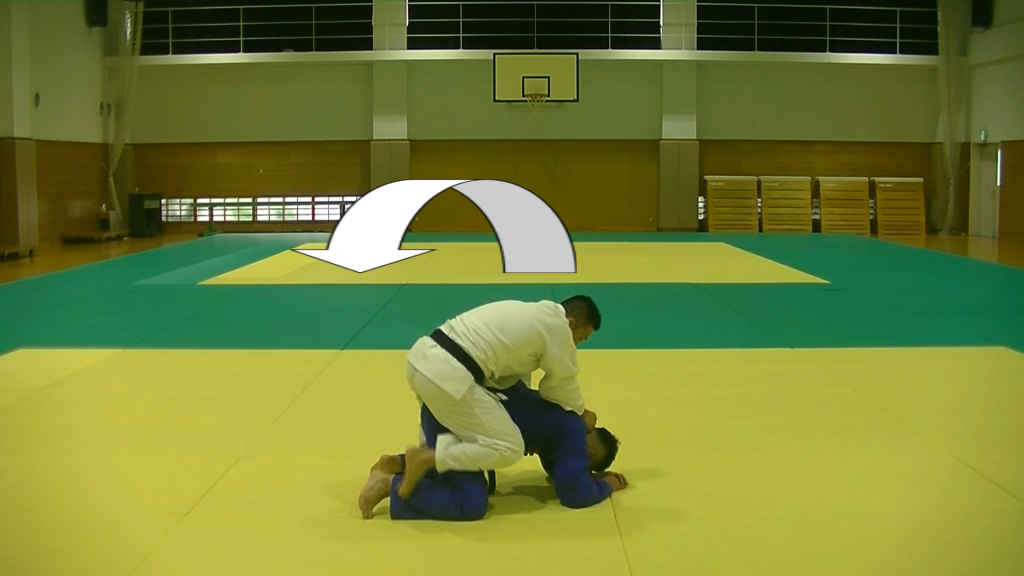
Q:If the direction in which white can effectively use Eri he has and the direction of to collapse sideway are opposite, do Judo-ka practice so that the direction will be the same way?
Yes. It is also important to consider how the transition can be well connected in your specialty Waza. In Ne Waza, if the opponent gets into a firm defensive position, it becomes difficult to hold the opponent’s body and/or Eri, and the attack becomes ineffective. How to attack in such a case is like a wisdom ring, and Judo-ka consider the composition of their Waza from this perspective.
White holds the opponent like this and turn him over in this manner.
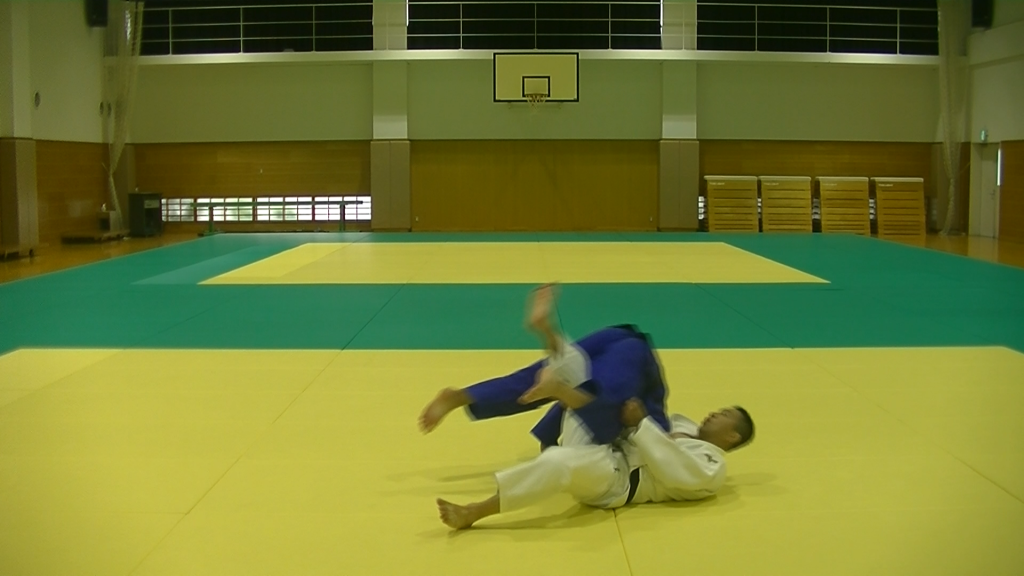
This Waza is called “Kato-gaeshi”, because it is often used by past All Japan Judo Champion Mr. Hirotaka KATO.
※You can find the video of Kato-gaeshi from here⇨https://www.youtube.com/watch?v=HLy3R03B-Xk
In this Waza, if Blue is held in this manner, it is difficult to defend against unless he shifts his weight to prevent it. As I mentioned before, in Ne Waza, Judo-ka need to think like a wisdom ring about how to respond to their opponents’ defenses.
Q:If the opponent is in a solid defensive position, is it difficult for even a Judo-ka who is good at Ne Waza, like Mr. KATO, to attack?
Yes, it is not easy. It is difficult to win in every opportunity in Ne Waza.
For example, in the case of Mr. Kenzo NAKAMURA, who is Olympic and World Champion, all Judo-ka know very well that he was good at Sankaku-jime, because he was very quick before entering Sankaku-jime and his strangling force was powerful, and once he entered Waza, his arms and legs were long and locked, therefore, it was a very effective Waza.
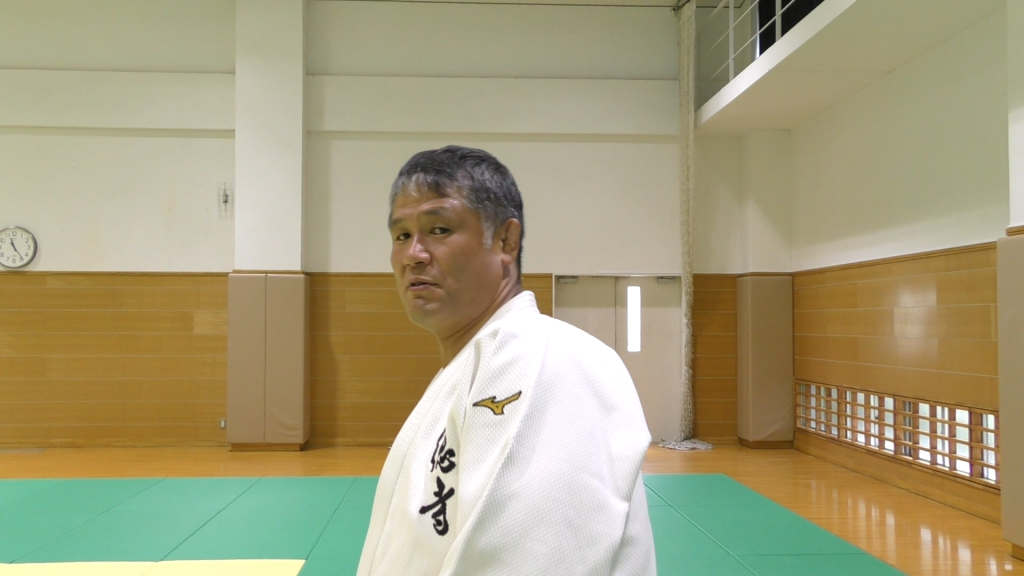
Also, talking about Ms. Shouri HAMADA, the winner of Tokyo 2020, other Judo-ka of course well know that she is also good at Ne Waza, but she is very fast when she connect to Ne Waza as well as she is powerful. There were times when her opponent would stand up and run away, but she could win.
Share this content:
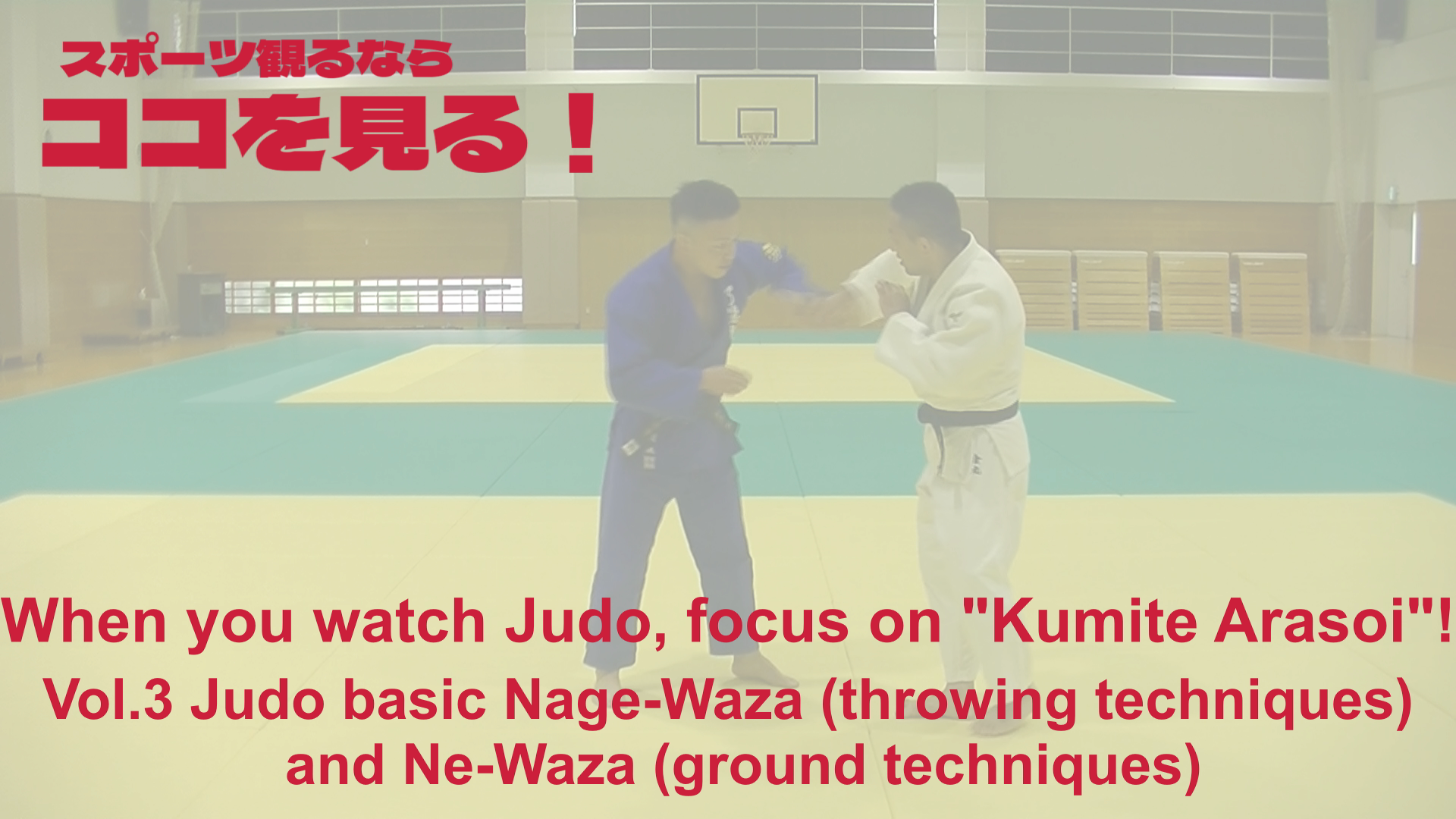
コメントを残す